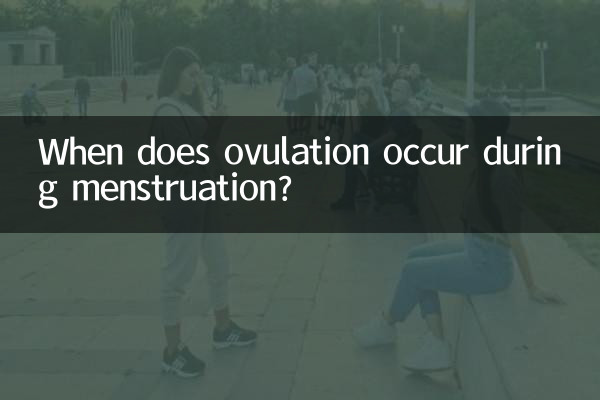When does ovulation occur during menstruation? Analyze the key stages of the female menstrual cycle
The female menstrual cycle is a complex and sophisticated system, in which the ovulation period is a critical period for conception. Knowing when ovulation occurs is important for women trying to conceive or prevent pregnancy. This article will analyze in detail the position of ovulation in the menstrual cycle and provide structured data to help you better understand this physiological phenomenon.
1. Basic stages of the menstrual cycle

The female menstrual cycle usually begins on the first day of menstruation and lasts an average of 28 days (range 21-35 days). The cycle can be divided into the following phases:
| Stage name | duration | major physiological changes |
|---|---|---|
| menstrual period | 3-7 days | The endometrium is shed and menstrual blood is discharged |
| follicular phase | 7-21 days | Follicles develop and estrogen levels rise |
| Ovulation period | 1-2 days | Mature eggs are released from the ovaries |
| Luteal phase | 10-14 days | Formation of the corpus luteum and increased secretion of progesterone |
2. The specific time of ovulation
Ovulation usually occurs about 14 days before your next period. The following is a reference for ovulation days for different cycle lengths:
| menstrual cycle length | expected ovulation day | Fertile period range |
|---|---|---|
| 21 days | Day 7 | Days 5-9 |
| 28 days | Day 14 | Days 12-16 |
| 35 days | Day 21 | Days 19-23 |
3. Body signals of ovulation
The female body will send out some obvious signals during ovulation, including:
1.Basal body temperature changes: Body temperature rises by 0.3-0.5℃ after ovulation
2.Cervical mucus changes: Becomes clear, thin, and elastic (similar to egg white)
3.mild abdominal pain: About 20% of women will feel temporary pain in the lower abdomen on one side
4.Increased libido: Affected by hormonal changes
5.breast tenderness: May appear after ovulation
4. Methods to accurately predict ovulation period
1.calendar method: Record menstrual cycles for more than 6 months and calculate the average cycle length
2.basal body temperature method: Measure resting body temperature every morning and draw a graph
3.cervical mucus observation method: Record changes in secretion properties
4.Ovulation test strips: Detection of luteinizing hormone (LH) peak in urine
5.Ultrasound monitoring: The most accurate but requires multiple medical examinations
5. Factors affecting ovulation
| Influencing factors | May affect the mechanism | Suggestions |
|---|---|---|
| pressure | Change hormone secretion rhythm | Maintain a regular schedule and exercise moderately |
| weight changes | Too high or too low a BMI affects hormone balance | Maintain a healthy weight range |
| disease | Endocrine diseases such as polycystic ovary syndrome | Seek medical treatment promptly |
| medicine | Certain drugs interfere with hormone secretion | Take medication as directed by your doctor |
| age | Ovarian function gradually declines after the age of 35 | Regular gynecological examination |
6. Common misunderstandings about ovulation period
1.Ovulation immediately after menstruation: Error! Ovulation usually occurs about 14 days before your next period
2.Safe period, absolutely safe: Error! Sperm can survive in the body for 2-3 days, and the contraceptive failure rate is high during the safe period.
3.Ovulation occurs 14 days after each menstruation: Error! Cycle length varies from person to person
4.A positive ovulation test strip means ovulation has occurred: Error! Ovulation does not occur until 24-36 hours after the LH peak
7. Ovulation period calculation under special circumstances
1.Lactation: Ovulation may be delayed, but it does not mean that ovulation will not occur
2.Irregular menstruation: Needs longer observation and more methods to assist judgment
3.Just stopped taking birth control pills: It may take several months to return to regular ovulation
4.perimenopause: Ovulation becomes irregular but pregnancy is still possible
8. Summary
Accurately grasping the ovulation period is of great significance to women's health management. Although the average ovulation period is about 14 days before the next menstrual period, individual differences vary greatly. It is recommended to combine multiple monitoring methods, especially for women who plan to become pregnant or need contraception. If you have any questions, you should consult a professional physician in time.
By understanding their own body signals and cycle patterns, women can better grasp the timing of childbirth and detect possible health problems in time. Remember, a regular menstrual cycle is an important indicator of female reproductive health, and any significant changes should be taken seriously.

check the details

check the details